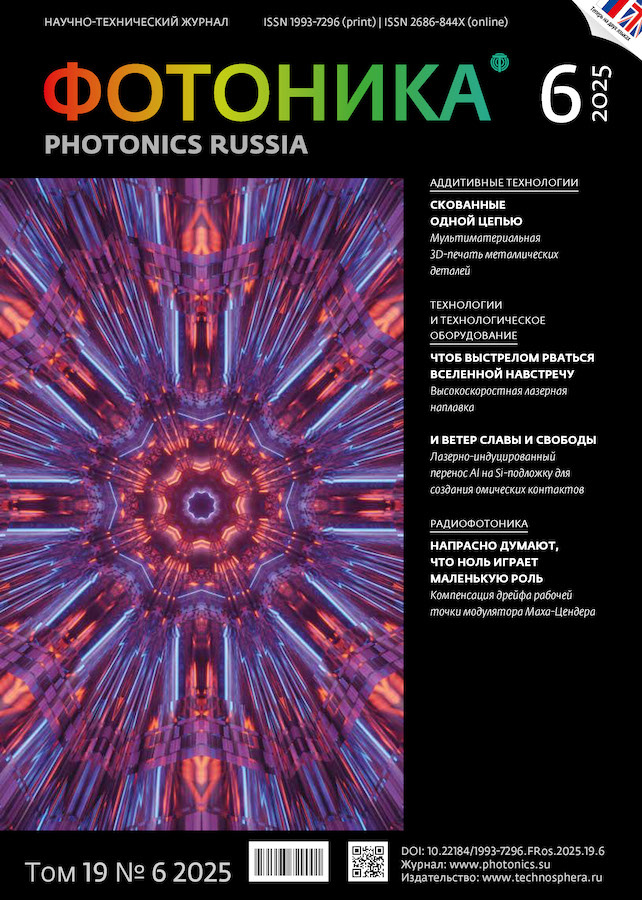The speech information leakage through the fiber-optic technical channels of the office: noise control (noise reduction)
- Authors: Grishachev V.V.1
-
Affiliations:
- Russian State University of the Humanities
- Issue: Vol 19, No 6 (2025)
- Pages: 486-499
- Section: Волоконно-оптические устройства и технологии
- URL: https://journals.eco-vector.com/1993-7296/article/view/694224
- DOI: https://doi.org/10.22184/1993-7296.FRos.2025.19.6.486.499
- ID: 694224
Cite item
Abstract
The efficiency of functioning and neutralization of speech information leakage channels through the fiber-optic utilities is largely determined by the noise pollution of the optical channel in the structured cabling systems of the facility. Adaptation of the well-known noise control methods in the fiber-optic speech information leakage channels allows to significantly increase the signal-to-noise ratio and, consequently, the interception efficiency. In particular, the fiber-optic subsystem of structured cabling systems at the facility with the distributed measuring properties can be represented as a phased acoustic fiber-optic array. While using the integration method for multichannel measurement, an informative signal can be isolated against the noise background. Another noise control method represents the comparison of two optical channels with asymmetric acoustic sensitivity (the differential method) that is possible due to the placement of optic fiber duplex cables in the cable ducts. The differential noise reduction method was tested on an experimental unit for investigating the speech information leakage channel that demonstrated a significant increase in the signal-to-noise ratio even at the short cable lengths. The differential method implementation is possible due to the correlation of low-frequency noise in the optical channel over a long period of time (0.1 ms) and a significant light path in the optical fiber (20 km). The given theoretical and practical studies show a high level of danger of acoustic fiber-optic speech information leakage channels and possible countermeasures.
Keywords
Full Text
About the authors
Vladimir V. Grishachev
Russian State University of the Humanities
Author for correspondence.
Email: grishachev@mail.ru
ORCID iD: 0000-0002-7585-7282
Cand. of Sc.(Phys.&Math.), associate professor, Institute for Information Sciences and Security Technologies (IISST)
Russian Federation, MoscowReferences
- Buzov G. A. Zashchita informacii ogranichennogo dostupa ot utechki po tekhnicheskim kanalam. – M.: Goryachaya liniya – Telekom, 2024. 586 s. ISBN 978-5-9912-0424-8.
- Katorin YU.F., Razumovskij A. V., Spivak A. I. Zashchita informacii tekhnicheskimi sredstvami. – SPb: NIU ITMO, 2012. 416 s.
- Zajcev A.P., Shelupanov A. A., Meshcheryakov R. V. et al. Tekhnicheskie sredstva i metody zashchity informacii. – M.: OOO «Izdatel’stvo MashinostroeniE», 2009. 508 s. ISBN 978-5-94275-454-9.
- Khorev A. A. Tekhnicheskaya zashchita informacii. Tom 1. Tekhnicheskie kanaly utechki informacii. – M.: NPC «AnalitikA», 2008. 436 s.
- Khalyapin D. B. Zashchita informacii. Vas podslushivayut? Zashchishchajtes’! – M.: NOU SHO «BayarD», 2004. 432 s.
- Kharkevich A. A. Bor’ba s pomekhami. – M.: Librokom. Lenand.2018–280 s. – ISBN 978-5-9710-5339-2, 978-5-397-03458-6
- Bendat Dh., Pirsol A. Prikladnoj analiz sluchajnykh dannykh. – M.: Mir, 1989. 540 s.
- Kul’chin YU.N. Raspredelennye volokonno-opticheskie izmeritel’nye sistemy. – M.: FIZMATLIT. 2001. 272 s. – ISBN 978-5-9221-0072-4.
- Listvin A.V., Listvin V. N. Reflektometriya opticheskikh volokon. – LESARart, 2005. 208 s. ISBN 5-902367-03-4.
- Grishachev V.V., Kazarin O. V., Kalinina YU.D. Fizicheskaya model’ ugrozy utechki akusticheskoj (rechevoj) informacii cherez volokonno-opticheskie kommunikacii. Voprosy zashchity informacii. 2018; 3: 35–51.
- Grishachev V.V., Zabolockaya A. D. Problema informacionnoj bezopasnosti volokonno-opticheskikh tekhnologij. Photonics Russia. 2022; 16(6): 484–500. doi: 10.22184/1993-7296.FRos.2022.16.6.484.500.
- Grishachev V.V., Kalinina YU.D., Tarasov A. A. Ocenka glubiny parazitnoj modulyacii sveta v opticheskoj kabel’noj sisteme s neodnorodnostyami. Voprosy zashchity informacii. 2016; 1: 62–73.
- Grishachev V.V., Kazarin O. V., Kalinina YU.D. Parazitnye akusticheskie modulyacii svetovykh potokov v raz’emnykh soedineniyakh opticheskoj seti ob’ekta informatizacii. Voprosy zashchity informacii. 2018; 4: 47–56.
Supplementary files













